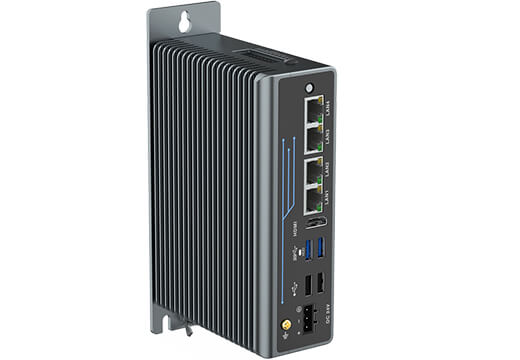How to Choose a High Real-Time Industrial PC – A Buyer’s Guide
When selecting an industrial PC (IPC), many procurement teams focus only on specifications like CPU, RAM, and storage. But in industries such as automation, robotics, CNC, and industrial networking, one factor matters just as much—real-time performance.
If your control system suffers from delays, the impact can be serious: inaccurate robot trajectories, slower PLC responses, or synchronization failures in EtherCAT networks. In this article, we’ll break down how to evaluate the real-time performance of industrial PCs and what to look for when making your next purchase.
Which Industries Need High Real-Time Industrial PCs?
Certain applications demand extremely low latency and predictable timing:
-
Industrial robots – motion control and trajectory planning
-
PLC/PAC controllers – high-speed I/O response and logic control
-
CNC and semiconductor equipment – microsecond-level precision
-
EtherCAT/Profinet systems – ensuring multi-device synchronization
In these fields, the wrong IPC can compromise accuracy, efficiency, or even lead to costly downtime
Why Real-Time Performance Matters
-
Robotics: High latency leads to off-path movements, reducing precision.
-
PLC/PAC systems: Slow I/O response causes delayed logic execution and reduced throughput.
-
Industrial Ethernet buses: Any lag disrupts synchronization between devices, impacting stability.
Without guaranteed real-time performance, even a high-performance CPU cannot meet strict industrial requirements.
How to Test an Industrial PC for Real-Time Performance
Before purchase, request a test unit from the supplier and run cyclictest on Linux (commonly used in industry).
Example command:
/usr/bin/cyclictest -p 99 -i 250 -m -a 1 -N
-
Run the test for at least 7×24 hours to simulate industrial workloads.
-
Observe the MAX latency value (in microseconds).
How to interpret results:
-
<100 μs – Excellent, suitable for most real-time control.
-
<50 μs – Ideal for robotics and high-precision systems.
-
>200 μs – May not be reliable for real-time control.
Key Factors in Choosing the Right Industrial PC
1. Hardware Architecture
-
ARM / ARM+FPGA: Great for low power, high real-time performance.
-
x86 architecture: High performance, but requires optimization for real-time tasks.
2. Operating System
-
Linux with RT-Preempt patches: Open-source, cost-effective, widely adopted.
-
VxWorks / Green Hills: Industry-grade real-time OS with excellent performance, but higher licensing cost.
3. Supplier Support
-
Does the supplier provide real-time optimization solutions?
-
Do they support EtherCAT/Profinet master functions?
-
Can they offer customization (BIOS, I/O, OS image) for your application?
Conclusion
When purchasing an industrial PC, don’t just compare CPU and RAM. For automation, robotics, and precision manufacturing, real-time performance is the key to reliability and efficiency.
By using cyclictest to evaluate latency, and by working with suppliers who understand real-time optimization, you can avoid compatibility issues and ensure smooth project delivery.
At Thinkbest, our fanless industrial PCs, DIN Rail PCs, and waterproof stainless-steel industrial PCs are built with real-time performance in mind, offering solutions for robotics, automation, and Industry 4.0.
Looking for an industrial PC optimized for real-time control? Contact us today to discuss your project requirements.
 How to Choose a High Real-Time Industrial PC – A Buyer’s Guide
How to Choose a High Real-Time Industrial PC – A Buyer’s Guide

